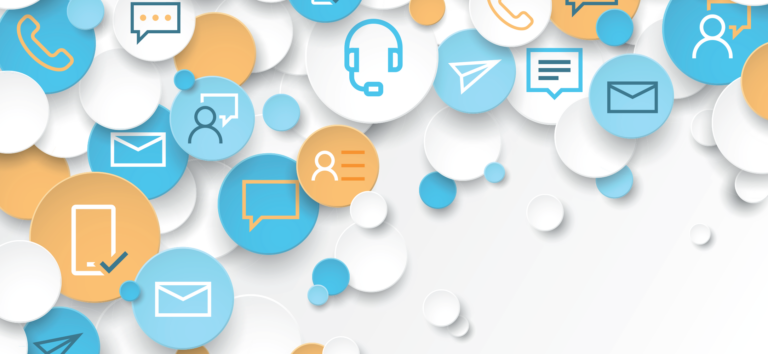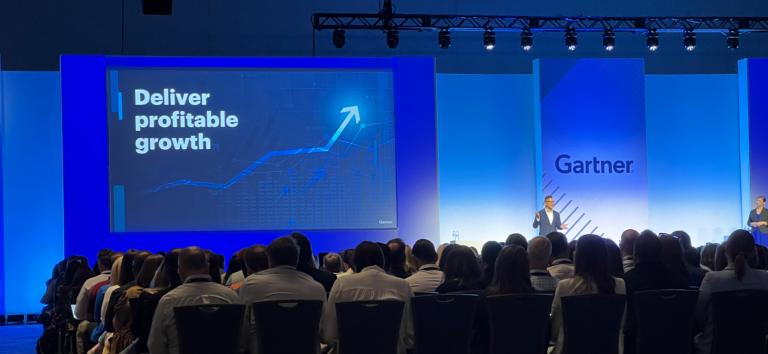Excellence in customer experience (CX) is vital for company survival. Here are the most impactful customer experience trends that will define marketing strategy in 2023.
1. Personalization + Emotional Appeal
If you think that personalization is an overused buzzword, well, it is. But there’s a good reason why.
Ninety-one percent of customers would prefer to buy from a company that recognizes and remembers their tastes, and provides relevant offers to match their taste profiles.
Despite that, marketers still struggle with delivering personalization. Forty-three percent of business leaders face difficulties when trying to obtain accurate customer data in real time.
“A personalized experience can be hugely enhanced by an appeal to emotions, too,” says Greg Heilers, co-founder, of Jolly SEO. “Using social media as emotional translators, you can break the wall between you and your customers. For example, at Jolly SEO, we maintain a friendly and informal tone of conversations when reaching out to our audience on Facebook and LinkedIn. B2B companies should take a serious look at adding humor to social media marketing and LinkedIn marketing, in particular.”
Adding emotional value has its benefits, too. According to predictive intelligence company Motista, creating an emotional connection can result in a 306 percent higher lifetime value.
2. Omnichannel Experiences
An omnichannel customer experience is among the top CX trends in 2023. According to RWS, 90 percent of consumers expect consistent interactions with a brand across devices and channels.
“Gaps,” or long waiting times between various touch points during a customer journey, create friction and interrupt the customer experience. A customer should be able to seamlessly switch between digital and physical channels without experiencing hiccups or challenges on the way.
For example, Macy’s Inc., one of the largest American retailers, unveiled new omnichannel initiatives to enhance the consumer shopping experience. Innovations include services like smart fitting rooms, mobile wallets, an app with image search, online order pickups, same-day delivery, and more. These digital features connect physical and digital journeys to strengthen the power of omnichannel experiences.
3. Enhanced Data Privacy
This year, data privacy will continue to be front and center for both brands and consumers. As consumers increasingly consider how they want to share their data, brands must also adjust their strategies to adhere to data privacy regulations, and meet consumer preferences.
Such worries aren’t unreasonable. Over the past 20 years, data breaches and cyber crimes have increased by nearly 17 times. Not to mention that, “very often, companies themselves violate consumer data privacy laws,” as Ben Michael, founder, Michael & Associates, points out.
“Especially with concerns with over collecting data and/or sharing it with third-parties,” Michael said. “In order to avoid legal issues, you should follow the General Data Protection Regulation (GDPR), unified data privacy laws, enacted in 2018.”
Moreover, brands must develop have a robust data privacy policy, consider additional data protection solutions, and make security enhancements to safeguard individual information of your customers.
4. Edge AI, IoT, and Real-Time Data
A seamless tandem of edge-computing and artificial intelligence (AI) is another 2023 trend that will empower customer experiences. The AI edge computing market is anticipated to reach $59 million by 2030 with a CAGR growth rate of 21.2 percent, in comparison to roughly $9 million in 2020.
Edge AI is the deployment of AI and ML in an edge computing environment to bring faster solutions by running tasks on connected edge devices in the physical world, in the closest proximity to people. It’s achieved through 5G adoption, sensors, new-age cameras, and other connected devices.
Edge AI has already given rise to the Internet of Things (IoT) and real-time analytics tools that can help connect physical and digital customer experiences. AI-powered tools also enable real-time customer journey analytics, smart market segmentation, predictive modeling, and data aggregation to minimize churn.
5. More Self-Service Options Online
According to HigherLogic, 79 percent of customers expect organizations to provide self-service alternatives and view them more positively if they do so.
Here’s a list of the most common online self-service tools:
- FAQs
- Knowledge bases
- User blogs and forums
- Customer portals
- Webinars
- Help desks
- Interactive Voice Response systems (IVRs)
- AI-powered chatbots
Shawn Plummer, CEO of The Annuity Expert, shares how his company is continuously expanding the range of self-servicing solutions:
“When we launched the website, we didn’t have any other self-service options besides a FAQ page. Most recently, after receiving feedback from our clients, we have added several types of self-service calculators. We’re also planning to enrich our website with more self-services [like] a knowledge base with how-to guides, video tutorials on annuities, and an online community forum.”
6. Customer Loyalty Programs
According to Nielsen, 84 percent of shoppers are more likely to visit a retailer that offers a loyalty program. Customer loyalty programs have already been adopted by 90 percent of businesses, and they will definitely remain one of the leading customer experience trends for 2023.
Loyalty programs also provide customer loyalty analytics that allow marketers to learn what works better for your target audience and drive retention for your business.
7. Freebie Marketing
According to a study from IDR Marketing Partners, nine out of ten consumers are likely to purchase more often from a retailer after receiving a free gift.
A freebie can be a powerful lead magnet. When incorporating freebies into the lead generation strategy, Colin Palfrey, CMO of Crediful, notes:
“A lead magnet (freebie) strategy is a highly effective tool for businesses to capture emails, generate more leads, build stronger, meaningful connections with potential clients, and grow loyalty by offering trustful materials and substantial resources.”
For example, SocialMediaExaminer uses a free 39-page report as a lead magnet on the website.
Some other examples of lead magnets are:
- Case studies
- Webinars
- Free tools
- Courses
- Worksheets or workbooks
- Giveaways
8. Customer reviews
Buyers trust online reviews more than ever before. In 2020, 60 percent of consumers said they regularly read reviews when searching for local businesses. In 2021, this number went up to 77 percent.
“As the number of people reading reviews is ever-growing, you should ask your customers for feedback regarding the service you’ve provided, and encourage them to write a couple of words about your company,” says Mark Pierce, CEO, Colorado LLC Attorney.
“You can send a follow-up email with a slight reminder that you are on Google and you’d appreciate any feedback,” Pierced added. “It’s also highly beneficial to place customers’ reviews right on the homepage so that they should be immediately seen by website visitors.”
Focus on Sustainability
Consumers seek companies that are explicitly committed to sustainability. According to sustainability agency Futerra, as many as 88 percent of consumers want brands to help them with conscious consumerism in order to be environmentally friendly and ethical in their daily lives.
Striving to meet their clients halfway, DIB Travel, a business travel management company, partnered with SQUAKE to develop a step-by-step plan for eco-conscious travelers. They calculate CO2 emissions from trips and offer concrete ways to achieve climate neutrality.
Similarly, a focus on sustainable packaging and products helps retail businesses stay front-of-mind for their customers.
Following CX Trends in 2023 and Beyond
Keeping up with customer experience trends that will shape 2023 is essential to meet your audience’s expectations both in the short-term, and in the long-term. By listening to customers’ needs, marketers can use data to develop the right strategies to innovate their business, and provide the best CX to the right audiences.



